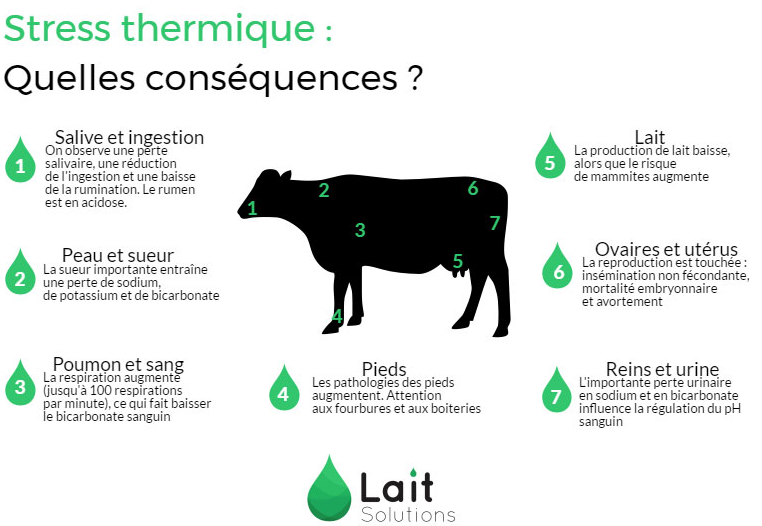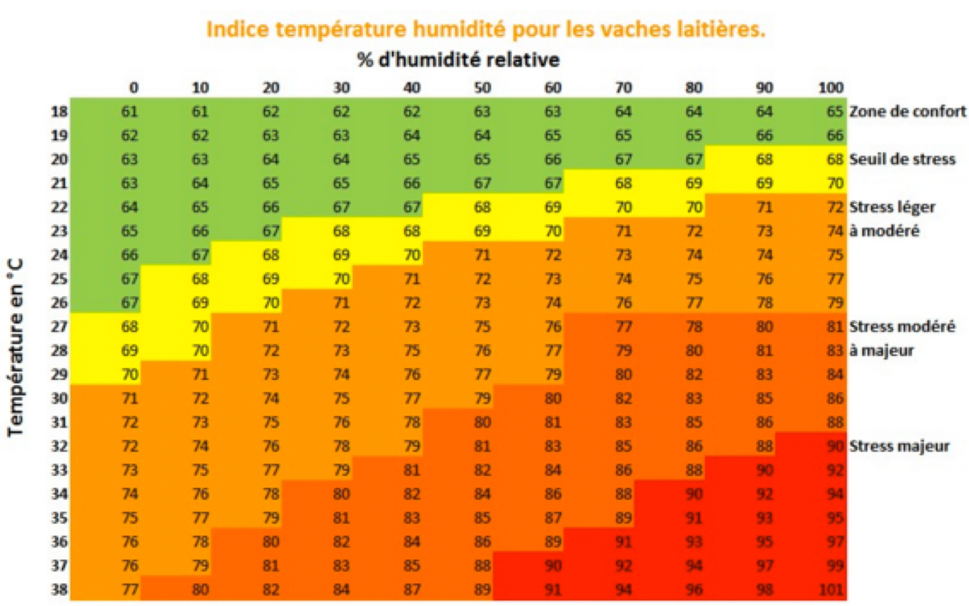The cow thermo-neutrality zone is between 10 and 20 ° C.

Figure: Thermal comfort and discomfort zones for dairy cows and calves (source: BTPL)
Above 25 ° C., you can observe:
- Alteration of physiological behavior and energy balance
- Consequences for reproduction and longevity
- Consequences on the quantity and quality of milk production

The reaction to heat stress depends on:
- Physiological characteristics (short-haired cows regulate their temperatures better)
- lactation stage and production level
- the composition of the ration and the consumption of food
- Animal building (ventilation - ventilation, etc.)
The implementation of a new agro-climatic indicator, the Temperature-Humidity Index (ITH) allows the thermal stress of the animal to be assessed by the pair "temperature, humidity". The table below presents the 5 “hygro-thermal” stress zones for cattle:
- comfort zone, in green
- stress threshold zone, in yellow (from 20 ° C. for high relative humidity)
- light to moderate stress area, orange
- zone of moderate to major stress, in dark orange (from 27 ° C. for humidity exceeding 70%)
- major stress area in red

Figure: Temperature-Humidity Index (ITH) for dairy cows (Source: FIDOCL)

Figure: Dairy cow victim of "sunburn" summer 2019 in Aubrac region